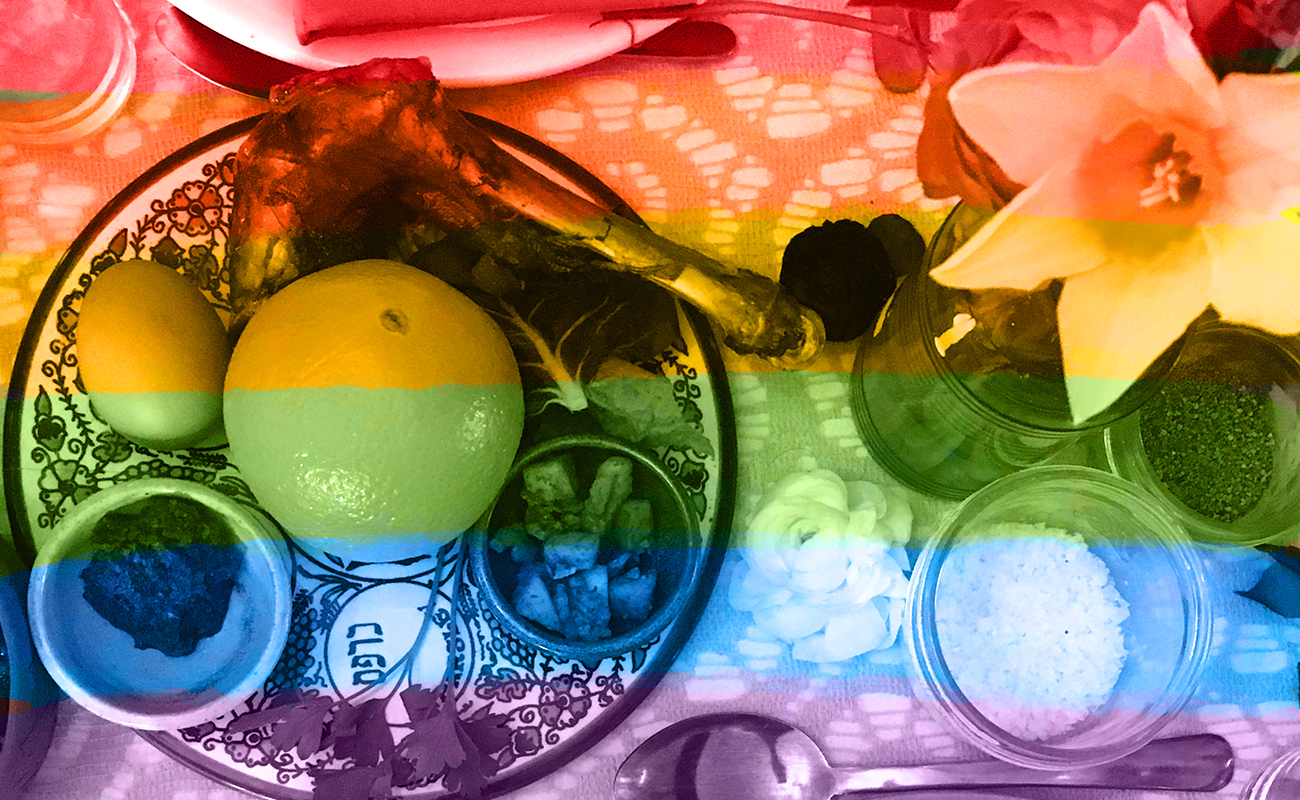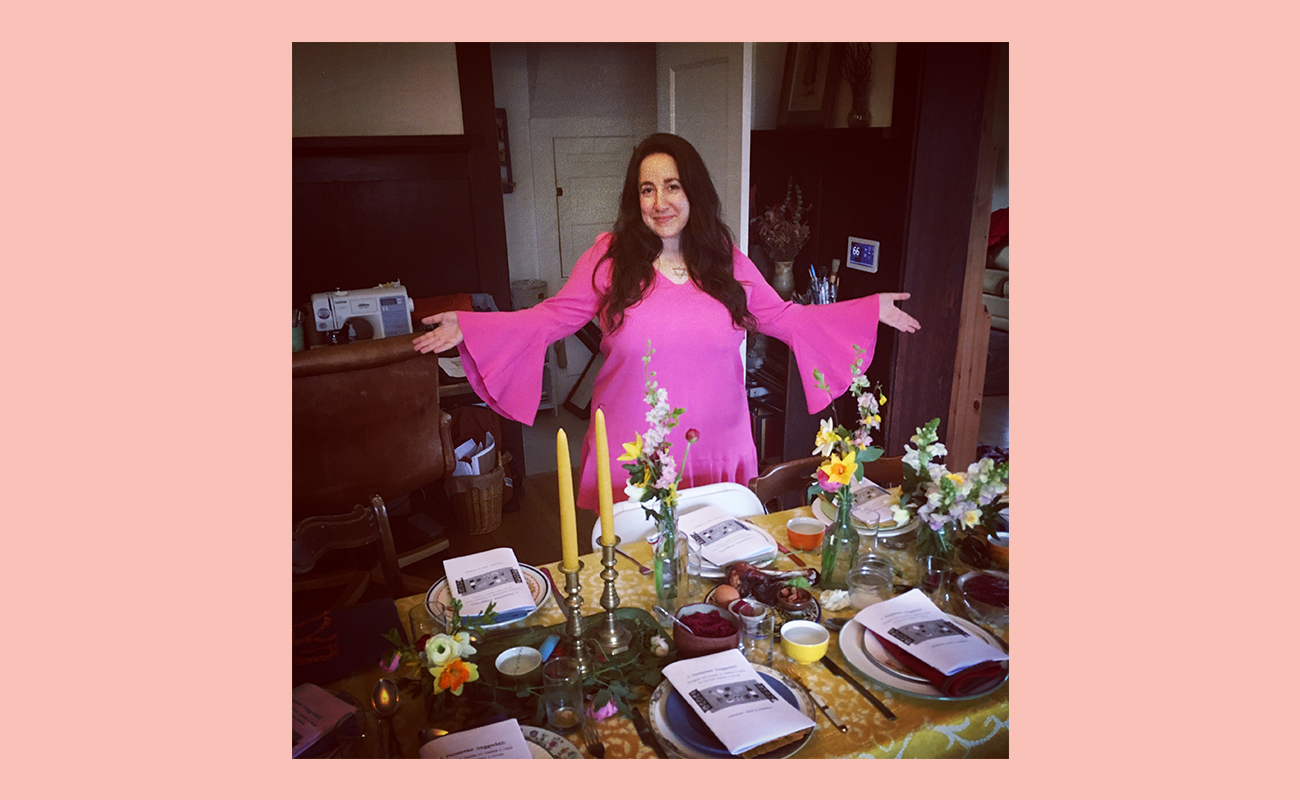When I was growing up, my mom always hosted a seder, and I loved helping her prepare. As an adult I’m not always able to make it home for seders with my family, so last year I co-hosted my very first seder with a dear friend. We are two queer women situated in an extremely queer community, so it was only natural that our seder was a queer one. But what made it that way?
I wrote some thoughts about that in my Queering The Jewish Holidays column for Autostraddle last year, meditating on the fact that as a queer person, if I host a seder it is intrinsically queer, while also acknowledging that there are certain actions I could take with my co-host to intentionally make our seder explicitly queer.
My queer seder last year was a great success, and I’m here today to share some suggestions with you so that you, too, can host the queer seder of your dreams! Don’t worry — planning a queer seder may sound overwhelming, but it can be as chill or as elaborate as you’d like. Well, as chill as any seder can be, you know?
1. Start planning early.
Whenever you’re hosting an event that requires inviting more than one other human, a fairly detailed and specific menu, and a whole book that you may or may not want to rewrite (we’ll get to that in a minute), it’s a good idea to start planning early! Making a plan will also answer a lot of the questions you may initially have about your seder, which can ease any anxiety you may be feeling.
Some things to think about when planning for your seder: How many folks will you be inviting? Will everyone be queer? Will everyone be Jewish? Can people bring their partners or friends? Will anyone be attending a seder for the first time? Do you want to make your own haggadah? Will everyone know each other? Can you provide pronoun stickers? How accessible is your space and can you make it more accessible for guests? What sort of things would make the seder feel queer to you, and what kind of help might you need making those goals into a reality?
2. Invite your guests and set your intentions.
Once you’ve answered some of the initial planning questions, invite your guests and let them know some of your hopes and dreams for the seder. An important rule of hosting is to remember that things will not go perfectly according to plan, but it’s also silly to invite someone to an event so steeped in order and ritual as a seder without giving them a heads up, especially if some or all of your guests have never attended a seder before or have never attended a queer seder before.
If you’re inviting other queer Jews, it’s nice to ask if they’ve been to a queer seder in the past and if so, what they liked about it and what they might like to contribute. Maybe one of your guests has an awesome vegetarian chopped liver recipe to contribute (yes, vegetarian chopped liver is queer, sorry I don’t make the rules!), or maybe someone else authored an amazing queer haggadah. If you’re inviting folks who aren’t queer, let them know your intentions about creating an explicitly queer seder, whatever that may be, and explain that you’ll be centering a queer Jewish experience with this event. And if you’re inviting folks who aren’t Jewish to a seder, you should definitely give them a heads up about what a seder is — it’s only polite to inform your guests about the four cups of wine before they make that commitment!
3. Consider making your own haggadah.
One of my absolute favorite parts of hosting my own queer seder last year was making a brand new haggadah — the book of steps and prayers you use to guide the seder. I’d never felt particularly connected to the haggadot I’d used in the past — there wasn’t anything wrong with them necessarily, they just weren’t special to me.
A few weeks before our queer seder, my co-host and I spent a few days pouring over different haggadot — some explicitly queer, some from our childhoods, some we found on the internet, some recommended by friends — piecing together a zine-like document that resonated deeply with us. We used a lot of different primary sources but I want to specifically shout-out The Love and Justice Haggadah, created in 2003 — we found it an invaluable resource both for material and style and inspiration; maybe you will, too!
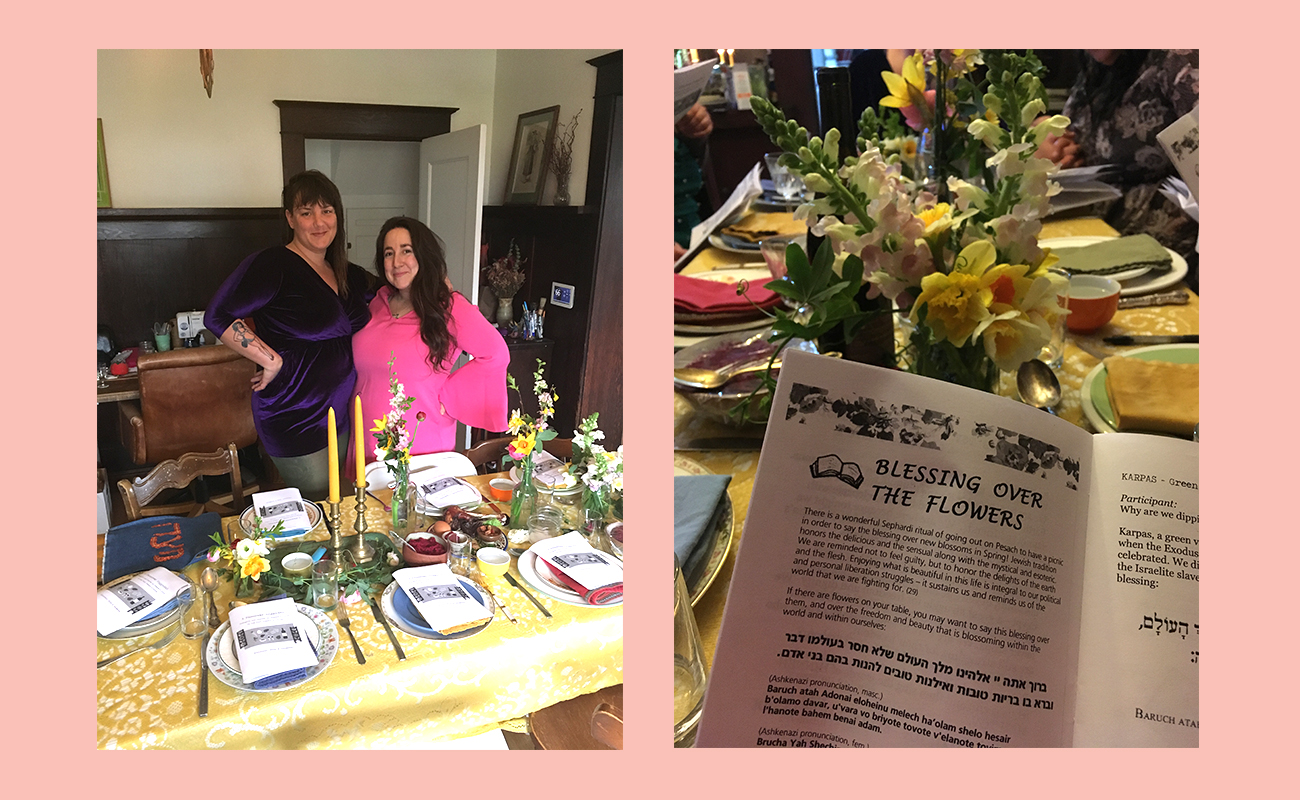
Making our own haggadah was a lot of work, but it was also deeply satisfying to create something that felt intentional, personal, and 100% ours. I strongly recommend going this route if you are hosting a queer seder. It’s a great way to make sure you’re telling the Passover story exactly the way you want to, highlighting the things that matter to you, and pulling in gender inclusive language, Jewish feminist herstory, personal anecdotes, and anything else your queer heart desires. Plus, once you’ve made it, you will have it forever — and you can add to it every year as you learn and grow and change.
4. Diversify your food options.
Listen, I know it’s a stereotype, but it’s a stereotype for a reason: Queer people have a lot of different needs when it comes to food! Vegetarian, vegan, gluten-free, nightshade-free, pescetarian, veg-but-hates-mushrooms… the list goes on and on. Don’t view this as a bummer — view it as one more way to queer your seder!
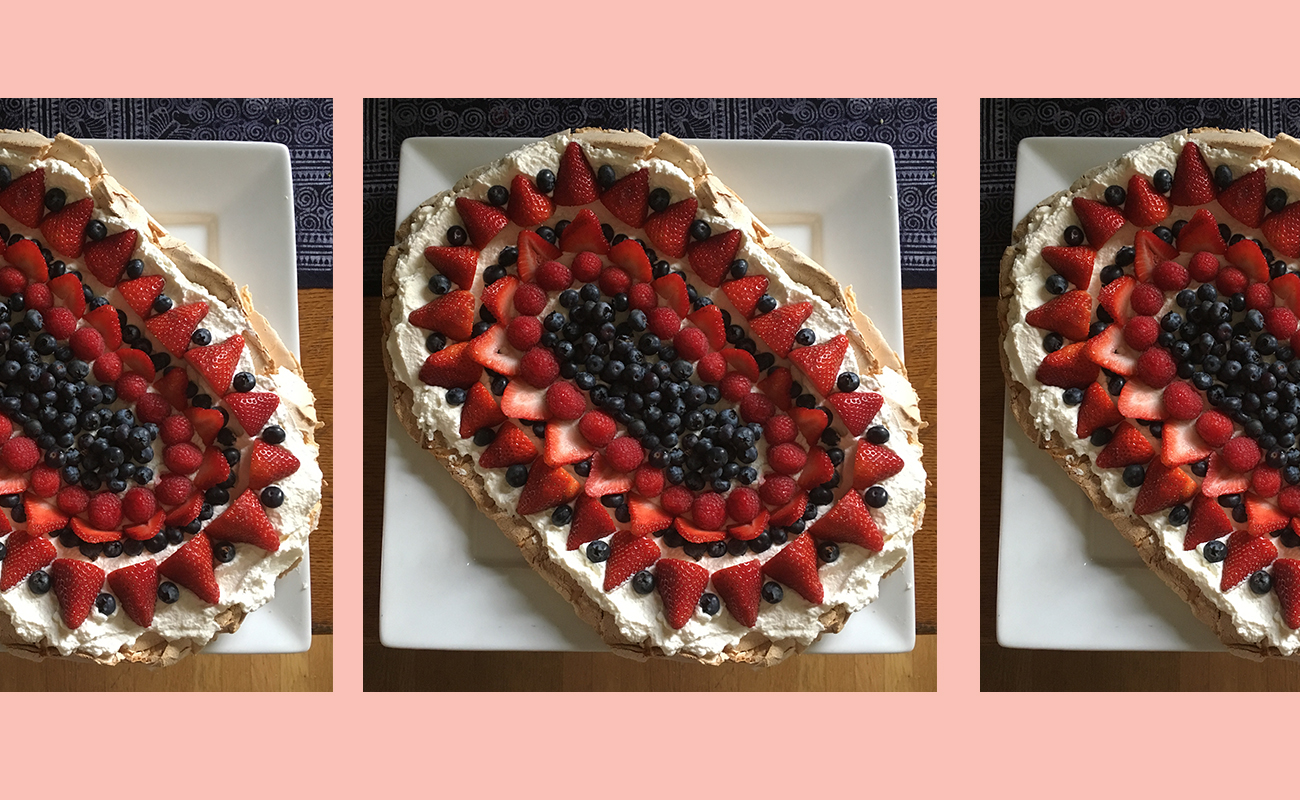
But seriously, it sucks to attend an event and not be able to eat anything there, so be communicative with your guests and consider making it more of a potluck than a traditional meal provided entirely by the host. The vegans in my life are some of the best and most inventive cooks I know — let them show off and shine! Also, might I remind you this means less work for you!
5. Queer decorations: optional but highly encouraged.
Part of any successful holiday event is setting a mood and a scene with decorations, and your queer seder is no exception. When I say queer decorations I don’t mean you have to go out and buy rainbow balloons to tie to the back of every chair or purchase a sparkly rainbow seder plate, though I personally would be into either of those decor options. But I do think it’s worth it to spend some time thinking about decorations because it makes things feel intentional and festive.
Maybe you do want to add some glitter confetti to your table spread. Maybe it feels really queer to allow your guests to dress casually instead of putting on uncomfortable formal wear like your parents used to insist on. The DIY nature of queerness is one of its most magical parts, and the freedom it gives you to wander from the script of any given event is a true gift. Take this gift and run with it. How gay can you make your centerpiece for your queer seder?
6. Tell the true story of the orange on the seder plate.
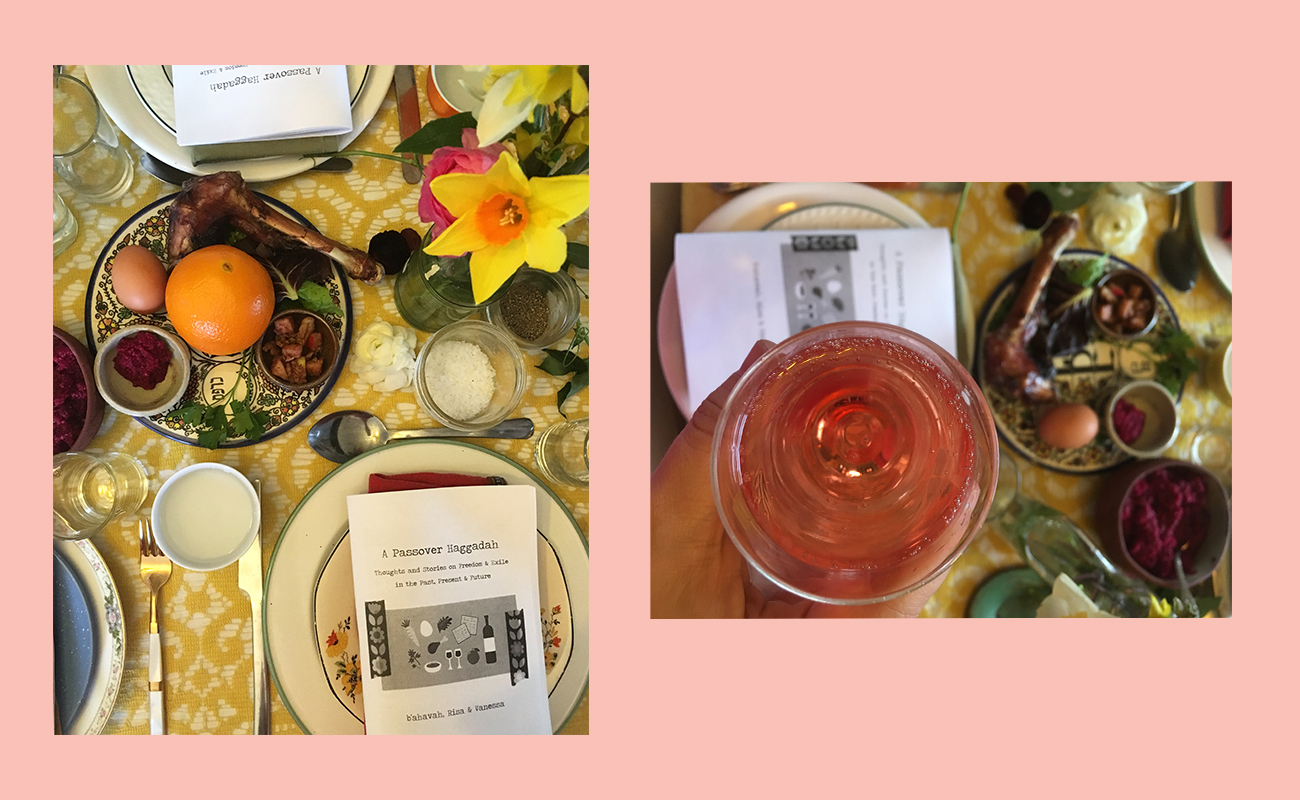
Lots of people I know put an orange on their seder plate and talk about its feminist history, but very few people acknowledge its true origin story, which is actually extremely gay! Read up on the truth about the orange on the seder plate and either verbally share it with your guests, print out some information that you can share over dinner, or even include the story in your DIY haggadah.
7. Share old traditions and make new ones.
Judaism is all about tradition, and one of the best parts of becoming an adult is deciding which childhood traditions you’d like to hang on to and creating brand new traditions that make you feel empowered and seen in ways that old traditions might not.
I think this is a really lovely thing to do with your guests, as a huge part of queerness for me is building community, and the best way to build community is to give everyone a voice and then really listen to what they have to say.
Some old traditions I personally like to hang on to: hiding the afikomen and allowing everyone to search for it, even if all your guests are adults; my mom’s pavlova dessert; encouraging questions and discussion in between reading from the haggadah; and the tune I learned for the Four Questions in kindergarten. Some new traditions I’m excited about: the DIY queer feminist haggadah we created; intentionally bringing conversations about social justice to the group; and brainstorming action items about how to hold up the spirit of the holiday and resist oppression in the here and now.
Enjoy your queer seder! Chag sameach!
